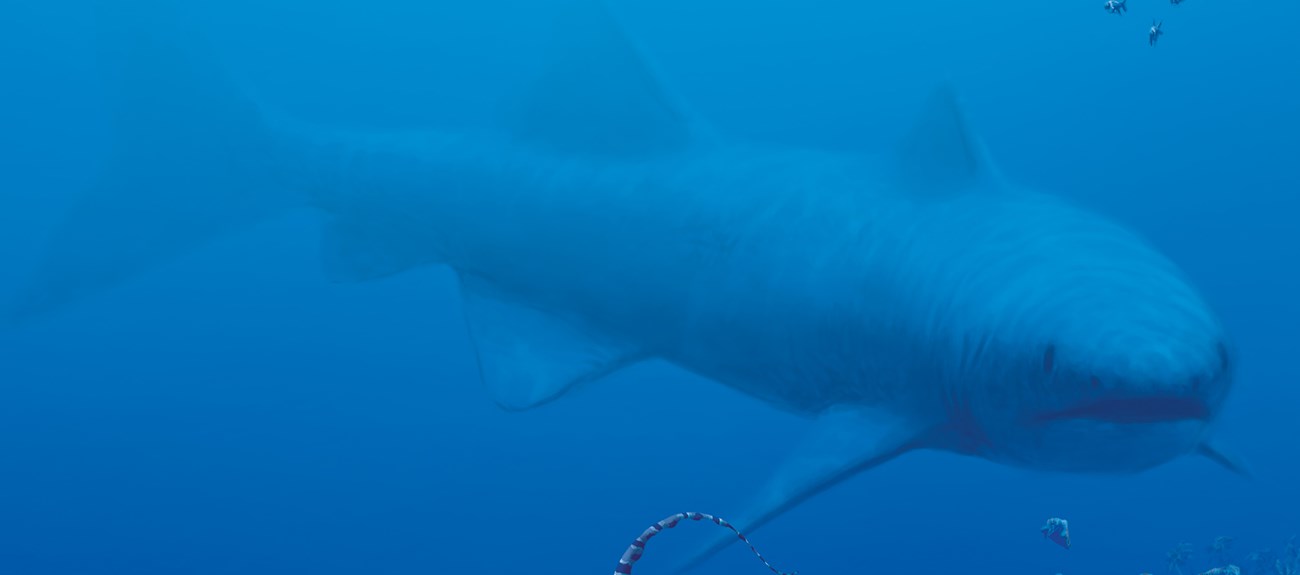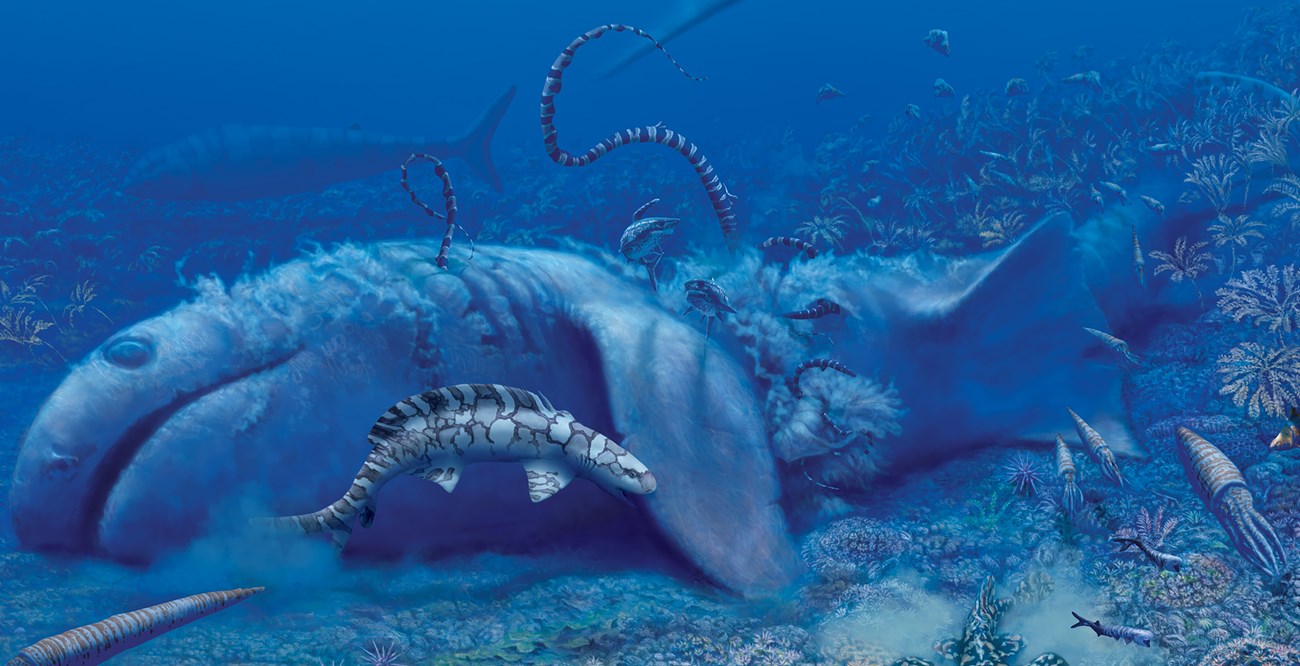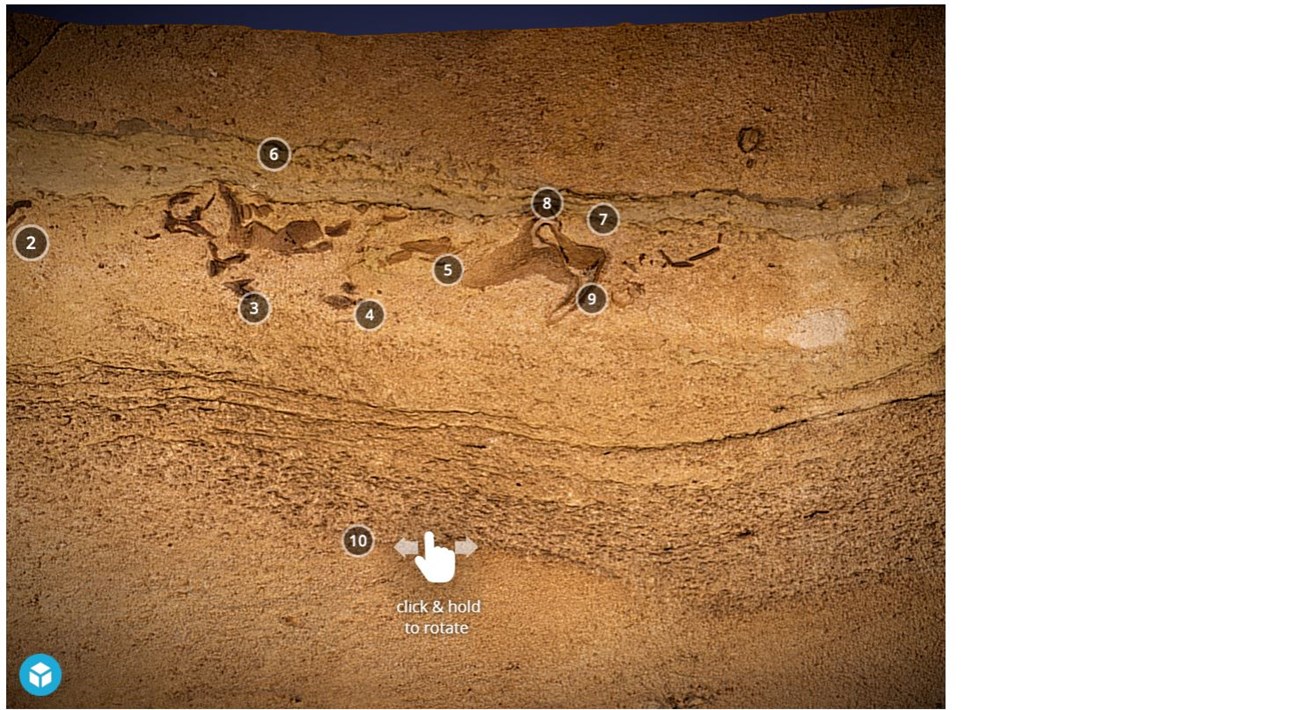Part of a series of articles titled Mammoth Cave Collections—Paleontology.
Article
Shark Fossil—"Saivodus striatus"

Painting by Julius Csotonyi.
Saivodus striatus is a large extinct ctenacanth shark that was one of the top predators of the Late Mississippian (335-340 million years ago) seas. Ctenacanth sharks are distant relatives to the modern shark lineage and during the Late Mississippian they reached their greatest diversification throughout world. These ancient sharks sported prominent dorsal fin spines with unique ornamentation along the length of the spine. Saivodus is well known in the fossil record from isolated teeth found in Europe and North America. Some of these teeth exceeded 6 centimeters in length of the tooth base, indicating that this shark could reach body dimensions greater than living Great White Sharks (Carcharodon Carcharias), which can reach a maximum length of 20 feet.
The discovery of cranial cartilages identified as Saivodus at Mammoth Cave National Park is a first of its kind for this species of shark. The longest identifiable element of the Saivodus cranium is the lower jaw, which is approximately 2.5 feet in length. Many isolated teeth collected from loose sediments from the cave floor beneath the skull and a single small spine stuck in the sediments with the jaw suggest that the carcass of this shark was fed on by multiple smaller shark species.

Painting by Julius Csotonyi.
The carcass of Saivodus striatus on the sea floor would have been an optimal food source for other organisms such as smaller sharks. The painting above includes animals that paleolontologists have discovered in the area. Fossil teeth of Bransonella (foreground), Falcatus (small sharks center) and the eel-like Thrinacodus (feeding towards the back) have been recovered from loose sediments beneath the Saivodus cranial cartilages at Mammoth Cave.
3D Fossil Shark—Saivodus striatus
Mammoth Cave National Park, Kentucky
The numbers 1-10 appear on the model and link to annotations:
1. Scale. This scale bar was used for rendering the 3D model. It can also give the viewer a sense of scale too. The checker board is made up of 1 cm squares and the length is 150 mm or about 6-inches.
2. Front end - Meckel's cartilage. This is the front end of the Meckel’s cartilage, which is the name for the lower jaw of cartilaginous fish, such as sharks. This here is the “chin” of the lower jaw that is exposed.
3. Teeth. Approximately 5 teeth are exposed on the cave wall. Most of what is seen are tooth bases, aka the roots. One however is exposed showing the tall crown which is angled towards the back of the jaw, suggesting it is a tooth found towards the back of the mouth. These teeth are between 3 cm to 3.5 cm (over 1.5 inches) in width.
4. Teeth. This tooth shows the base or root exposed on the surface of the cave wall.
5. Small Shark Spine. This is a dorsal fin spine from a different and smaller species of shark. It might be evidence of the Saivodous shark’s last meal.
6. Miscellaneous cranial cartilages. The pieces here are an assortment of disarticulated parts of the Saivodus skull and jaw. Below this are a collection of teeth from this shark too.
7. Back end of the Meckel's cartilage. The back end of the lower jaw is missing, but we can estimate that this lower jaw was approximately 76.2 cm (2.5 feet) in length.
8. Mandibular knob. A process of the inner side of the lower jaw in sharks. From its position, we know that the lateral (outer) side of the jaw is exposed to us, making this a left lower jaw to Saivodus.
9. Ventral mandibular ridge. The outer ridge where the muscles for the jaw attach.
10. Saivodus striatus. The discovery of cranial cartilages identified as Saivodus at Mammoth Cave National Park is a first of its kind for this species of shark. This discovery has helped better understand what this species of ancient shark may have looked like. It is thought it could be as large as 8.5 m (28 ft).
Related Links
- Mammoth Cave Fossils
- Mammoth Cave National Park, Kentucky—[Geodiversity Atlas] [Park Home]
- NPS—National Fossil Day
- NPS—Photogrammetry
- NPS—Fossils and Paleontology
- NPS—Geology
Last updated: April 30, 2021

